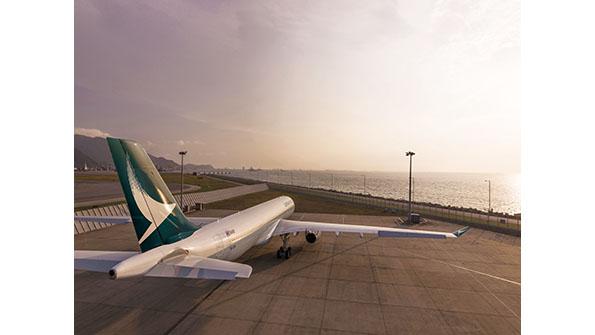EDITORIAL: Legacy carriers must adapt to the new reality | 論説:フルサービスキャリアは新しい現実に適応せねばならない

コロナ危機がもたらした航空業界への大損害は誰の責任でもない。航空会社・従業員・空港・業界関係者の誰ひとりとして、このような事態を予測することはできなかっただろう。世界的なウィルス感染拡大への恐怖、国境の閉鎖、隔離措置、経済の不確実性といったものは、収益・雇用・未来までをも破壊し、この業界に想像を絶する損害を与えた。
しかし、このような事情があったとはいえ、フラッグキャリアを含むあまりに多くの航空会社が、順風満帆の状態から一気に破綻寸前にまで追い込まれたことは、航空会社の経営方針の根本的な見直しや、キャッシュバランスとコストベースの対比が必要だということを示している。
航空会社の経営は高コストのビジネスだ。すべての航空会社にとっての最優先事項、「安全」にはカネがかかる。航空機とその装備品や部品も高額だ。燃料はたとえ相場が安い時期であっても、必要量が多いためにコストの大きな割合を占める。税金や空港使用料も不釣り合いに高額になることがある。そして、人件費が最大のコストを占めることが多い。
一部の国の航空会社に与えられてきた政府からの支援は、極めて困難な時代を乗り切るためには不可欠なものだった。しかし、そのような支援は長期にわたって繰り返し受けられるものではない。コロナ危機がもたらした景気後退の長期化に備えるには、航空会社は破産手続の枠外で再構築を進める必要がある。そして、充分な手元資金を積み立てることに、これまでよりもはるかに高い優先順位をつけて取り組まなくてはならない。
大手を含む従来型のフルサービスキャリアは、コロナ禍により「コモディティ化」されてしまったことを認識する必要がある。今や、世界の超大手LCCはフルサービスキャリアと同等、またはそれ以上のサービスを提供するようになったのだ。どういうことかというと、LCC各社はその付帯収益モデルにより、以前と変わらない軽食・飲み物・アメニティの機内販売を続けている。一方、多くの大手航空会社は機内サービスを完全に中止し、高い料金を支払う上位顧客向けのラウンジさえも閉鎖している。こうなると、フルサービスキャリアと超大手LCCの違いは一体何だというのか?
対照的に、より身軽で革新的、さらに組合の束縛も少ない超大手LCCは、デジタル化とテクノロジーを駆使してさらにコストを削減し、顧客がこれまで以上に必要としている即時性の高い情報やオートメーションを提供するようになった。
従来型の航空会社の中でも、一部の会社はコロナ禍とその余波がもたらす抜本的な構造改革の必要性に気付いている。キャセイパシフィックグループは、主力キャリアに対する政府からの2度目の支援を辞退するという、苦しいが勇気ある決断を下した。これは、同社のいう「新しい現実」に適応した規模・組織・コスト体質を作り上げるための長期的な計画こそが、今必要とされるものだということを理解している証だ。
すべての航空会社が新しい現実に直面しており、これに適応した者だけが生き残るだろう。
以上は、Karen Walkerが Aerospace Daily & Defense Report いた記事です。Aviation Week Intelligence Network (AWIN) のメンバーシップにご登録いただくと、開発プログラムやフリートの情報、会社や連絡先データベースへのアクセスが可能になり、新たなビジネスの発見やマーケット動向を把握することができます。貴社向けにカスタマイズされた製品デモをリクエスト。
No airline, airline employee, airport or company serving the air transport industry bears fault for or could have forecast the devastation wrought by the COVID-19 pandemic. Global fear of virus transmission, border closures, quarantines and economic uncertainty have inflicted an almost unimaginable toll on this industry in terms of lost revenue, jobs and even futures.
Even so, the speed with which so many airlines, including most large legacy carriers, descended from boom to would-be bust without government aid indicates a need for a fundamental rethink of how most airlines operate and their cash balance versus cost base.
Running an airline is a high-cost business. Safety, which is every airline’s top priority, is expensive. Aircraft and everything on and in them are expensive. Fuel, even at its lower price end, is a major proportion of cost because of the volumes needed. Government taxes and airport fees can be disproportionately high. And labor is often the highest cost of all.
Government support that has been given to airlines in some, but not all, countries has been crucial to keeping them afloat through extremely difficult times. But it cannot be a long-term, recurring prop. To better prepare themselves for an extended COVID-induced economic downturn, airlines must restructure, preferably outside of a bankruptcy court. And they must put a much higher priority on building strong cash reserves.
Legacy and major airlines must also grasp that the pandemic has stripped them down to commodity level. The world’s ultra-LCCs are now in a position to offer equal or better service than the “full-service” carriers. The ultra-LCCs’ ancillary revenue model means they continue to offer the same for-sale onboard snacks, beverages and amenities they served before COVID struck. Many major carriers, meanwhile, have suspended all onboard service. Many airline club lounges, for which even high-tier customers typically pay a high fee, are closed. What’s to distinguish the full-service carrier from the ultra-LCC?
Meanwhile, the more agile, innovative and less union-controlled ultra-LCCs are turning to digitalization and technology to push costs even lower while giving customers the instant information and automation they need more than ever.
Some legacy carriers are recognizing the sweeping structural changes compelled by the pandemic and its aftermath. Cathay Pacific Group has taken the difficult but brave decision to decline a second tranche of government wage subsidies for its mainline carrier, acknowledging that what is needed now is a long-term plan to make Cathay the right size, shape and cost for what it calls “the new reality.”
All airlines are now in the new reality. Only those that adapt will survive.